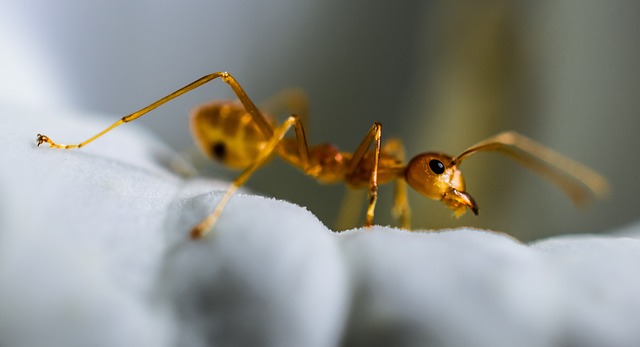Ants, despite being nuisances, play vital roles in ecosystems. Effective and eco-friendly ant control involves understanding their behaviors, using natural repellents, habitat modification, and biological controls. Chemical pesticides pose risks, so sustainable methods like essential oils, boric acid, plant-based solutions, and eco-friendly traps are preferred. Long-term strategies include cultural practices, maintaining cleanliness, and introducing beneficial insects like ladybugs and parasitoid wasps. Community engagement and education promote these greener ant control practices for a healthier environment.
Looking for effective yet eco-friendly ant control? This comprehensive guide explores natural solutions to manage these persistent pests while preserving our environment. From understanding ant behaviors and their ecological impact to organic repellents, innovative traps, and beneficial insects, discover a holistic approach to ant management. Learn about cultural practices, community engagement, and sustainable habits for long-term prevention. Embrace eco-friendly ant control and protect our planet, one step at a time.
Understanding Ant Behaviors and Their Impact on the Environment
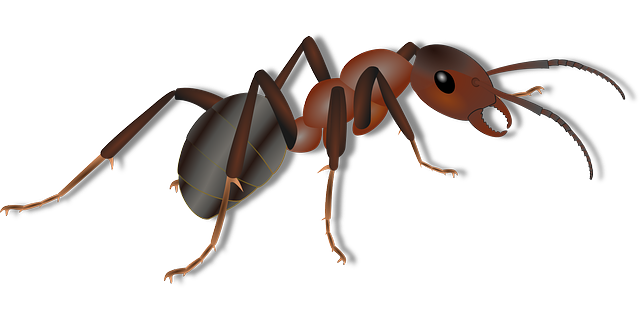
Ants, though often seen as a nuisance, play a complex role in our ecosystems. Understanding their behaviors is crucial for effective eco-friendly ant control. These social insects contribute to soil aeration and seed dispersal, aiding in plant growth and ecosystem balance. However, when their colonies expand, they can disrupt natural habitats and even harm native species by competing for resources or inadvertently spreading pests.
Ants’ impact on the environment is significant, especially when it comes to their influence on biodiversity. Their intricate nest-building activities can alter soil structures, while their foraging patterns can lead to changes in local plant communities. By recognizing these behaviors, we can employ targeted and environmentally conscious methods for ant control, ensuring a harmonious coexistence between humans and these fascinating creatures.
Traditional Ant Control Methods: Pests vs. Ecosystems
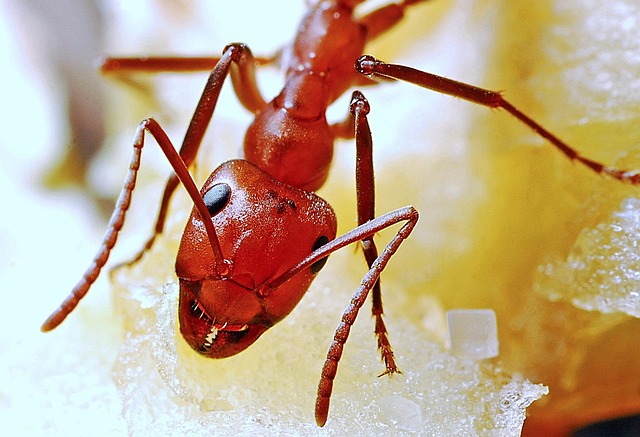
Traditional methods of ant control often involve chemical pesticides, which can be highly effective in eliminating ant infestations but come with significant drawbacks. These chemicals are designed to kill, leaving little room for error as they can also harm beneficial insects, birds, and other wildlife, disrupting entire ecosystems. The impact extends further, as residual traces can contaminate soil, water sources, and even enter the food chain, posing risks to human health and the overall balance of nature.
Ant control should ideally strive to maintain a balance between ridding spaces of ants and preserving the ecological web. Eco-friendly alternatives focus on non-toxic methods, such as natural repellents, habitat modification, and biological control agents. These approaches not only reduce environmental impact but also promote a healthier relationship with these insects in our living spaces.
Natural Repellents and Organic Solutions for Ant Management
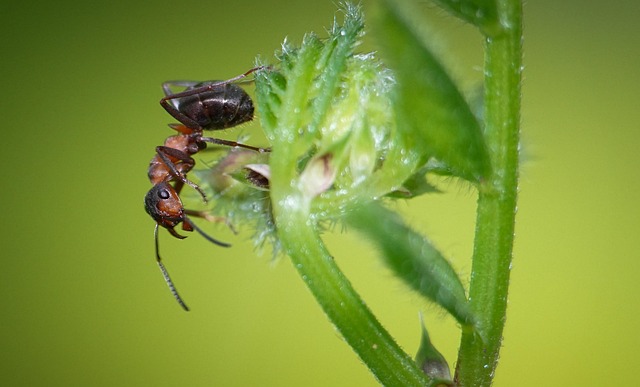
Natural Repellents and Organic Solutions have gained popularity as eco-friendly alternatives for effective ant control. Essential oils like peppermint, lemon, and eucalyptus are powerful deterrents due to their strong scents that ants find repulsive. Sprays or extracts made from these oils can be applied around entry points, ensuring a fresh and natural scent that keeps ants at bay. Another organic approach involves using boric acid, which is non-toxic to humans but highly toxic to ants. This powder can be strategically placed in ant trails, acting as a natural insecticide.
Plant-based solutions offer another layer of protection. Certain herbs and flowers, such as lavender, basil, and marigolds, naturally repel ants due to their distinct fragrances. Planting these around the perimeter of your space can create a protective barrier. Additionally, white vinegar can be used as a natural cleaner, eliminating ant trails and pheromone signals, disrupting their communication and navigation systems. These organic methods provide a safe and sustainable way to manage ants without resorting to harsh chemicals, promoting a greener approach to ant control.
Eco-Friendly Ant Traps: Innovative Approaches to Control

In the quest for effective yet environmentally conscious ant control, eco-friendly ant traps have emerged as innovative solutions. These traps differ from traditional chemical-laden options by employing natural bait and non-toxic methods to attract, capture, and eliminate ants. By utilizing specific pheromones and organic substances, these traps entice ants without harming them or leaving harmful residues. This approach not only keeps your space free from ant invasions but also safeguards pets, children, and beneficial insects.
Eco-friendly ant control practices offer a sustainable and safe alternative for both indoor and outdoor settings. These innovative solutions encourage the use of biodegradable materials and reduce environmental pollution associated with chemical pesticides. With careful placement and regular monitoring, eco-friendly ant traps can effectively navigate and disrupt ant colonies, providing long-lasting relief from these persistent pests while maintaining ecological balance.
Cultural Practices and Habitat Modification for Long-Term Prevention
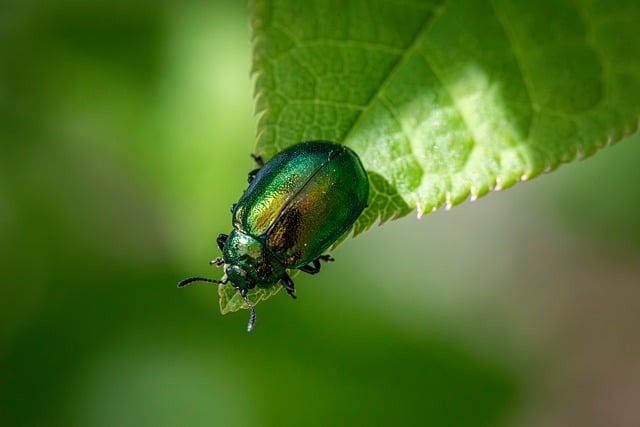
Ant control is not just about quick fixes; it’s a long-term strategy that starts with understanding and modifying cultural practices and habitats. By embracing eco-friendly approaches, we can create an environment that discourages ant invasions naturally. This involves minimizing food sources by keeping kitchens spotless, storing grains in airtight containers, and promptly cleaning up spills or crumbs. Additionally, maintaining good sanitation practices in outdoor areas is crucial, as ants are attracted to sugary residues left behind by fruits and other plants.
Habitat modification plays a significant role in ant control. Removing potential nesting sites by trimming trees and shrubs closely to structures can deter ants from establishing colonies nearby. Creating physical barriers using natural materials like diatomaceous earth or certain essential oils around entry points can also be effective. These practices, combined with regular monitoring, help maintain an ant-free environment, ensuring a more sustainable and eco-friendly approach to ant control.
Beneficial Insects: Allies in the Fight Against Ants
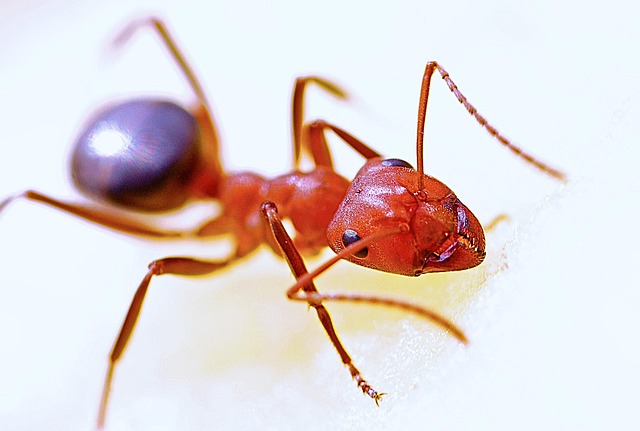
In the battle against ants, it’s essential to recognize that not all insects are detrimental. In fact, beneficial insects play a crucial role in natural ant control. These allies include ladybugs and lacewings, which feed on ant larvae and eggs, helping to curb their population growth. By introducing these insects into your environment, you’re tapping into a sustainable solution for ant control.
Moreover, certain types of parasitoid wasps are known to target ants, laying their eggs within the colony. As the wasp larvae develop, they consume the ant larvae from the inside out—a biological control method that’s both effective and eco-friendly. This natural balance helps maintain a healthy ecosystem, ensuring that ants remain at manageable levels without resorting to harsh chemicals.
Community Engagement and Education for Sustainable Ant Control
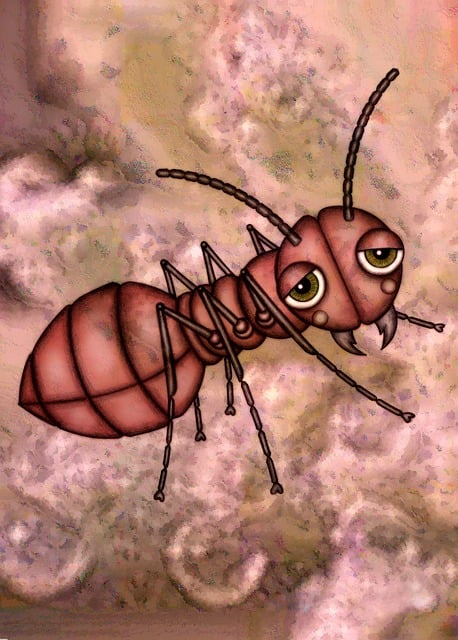
Community engagement and education play a pivotal role in promoting sustainable ant control practices. By involving local residents, schools, and community groups, we can foster a collective understanding of eco-friendly methods to manage ant infestations. Educational initiatives should focus on raising awareness about the environmental impact of traditional pest control chemicals and introducing alternative, greener solutions. Workshops, community clean-up events, and interactive programs in schools can empower folks to take proactive steps towards a more sustainable future.
Engaging communities enables the sharing of knowledge and best practices, ensuring that everyone contributes to a healthier ecosystem. This collective effort not only helps in controlling ant populations but also creates a long-lasting positive impact on the environment. By empowering individuals with the right information, we can create a network of environmentally conscious citizens who actively participate in sustainable ant control measures.
